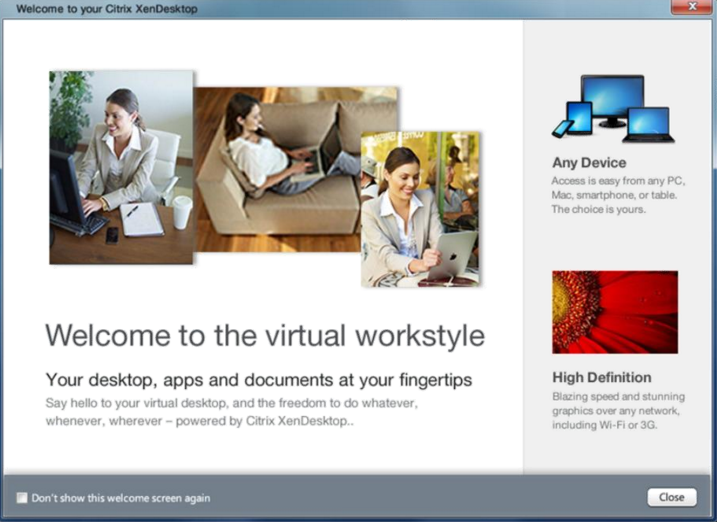Citrix rolls out XenDesktop 5; Bets UI can popularize desktop virtualization

Citrix is launching XenDesktop 5, the next major release of its desktop virtualization software, and the company is betting heavily that the user interface will be a big differentiator.
The company unveiled XenDesktop 5 at its Synergy conference in Berlin. The desktop virtualization software, which is increasingly gaining traction and boosting Citrix's quarterly results, aims to do the following:
- Make it easier to manage desktops and multiple devices ranging from tablets to smartphones;
- Enable IT departments to install XenDesktop in 10 minutes;
- Enable applications for touch;
- Provide one log-in and application self service so users can download enterprise applications, Web tools and use on-demand software;
- And give users a simple interface that takes the geekiness out of virtualization.
Of those points, the last one is most notable. "The user experience is strategic for us," said Wes Wasson, chief strategy officer at Citrix. "XenDesktop is not a server virtualization tool masquerading as desktop virtualization."
Wasson's argument is that desktop virtualization, which enables companies to deliver enterprise software to any device including "bring your own computing (BYOC)" arrangements. Most companies have some form of BYOC in place today as workers bring in their Android devices and Apple iPads for work. Technology managers are looking to desktop virtualization as a way to garner some sort of control over technology usage for better security and data protection.
Will the user interface matter? To end customers carrying around Citrix's Receiver app on their iPads it matters. To IT departments, a good experience can't hurt. "The UI is the first impression," said Wasson. "Do you want to give users something they are frightened and concerned about or something that's inviting? IT managers are betting their career on this stuff so it has to work and be accepted."
A few key points from Citrix's take:
- First, it's refreshing that a enterprise software company is seriously betting on the user experience---so few do.
- Citrix is going for a ground up approach to desktop virtualization to ease a choice to go to desktop virtualization. If end users think Citrix's desktop virtualization is hip and functional it will stand out. After all, CIOs have been conditioned to the traditional desktop and device upgrade cycle for decades.
- The bet here is that central IT can become more than the "no" shop and give users what they want.
Now it's still early in the desktop virtualization inflection point, but companies are very interested. Citrix has 50 of the Fortune 100 deploying desktop virtualization in production. A good user experience could bolster that percentage.
While XenDesktop 5 is the headliner, Citrix also had other key items announced at its Synergy powwow. Among them:
- Citrix is enabling GoToMeeting with video and is betting on simplicity. GoToMeeting will provide video conferencing for any computer with a Webcam. No standalone video conferencing hardware or drivers. This goes into beta now and ships in the first quarter. In addition, GoToMeeting will launch in Europe in Germany, Austria, France and Switzerland with local language support.
- XenServer 5.6 featurepack launched. The most notable point here is that XenServer is now optimized for desktop virtualization storage. Remember, virtualization increases your storage costs.
- For the datacenter, Citrix launched OpenCloud Access, a single sign-on and provisioning system for Web applications, and OpenCloud Bridge, which is a dashboard that provides performance monitoring for computing resources. These connectors plug into Citrix's OpenCloud architecture.
Related:
